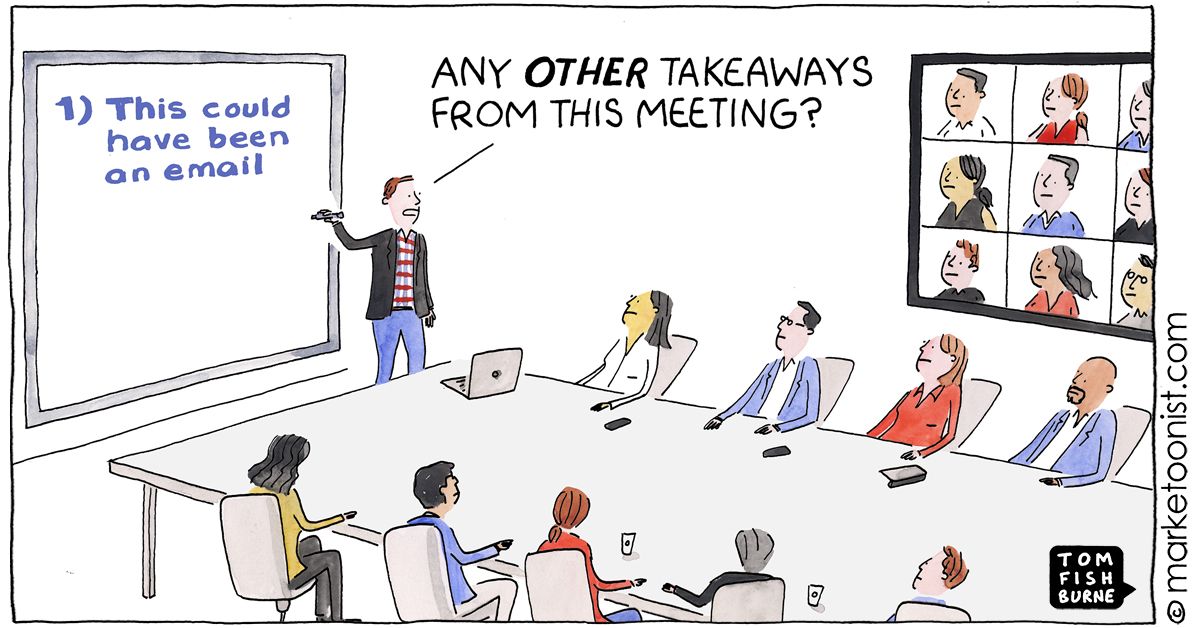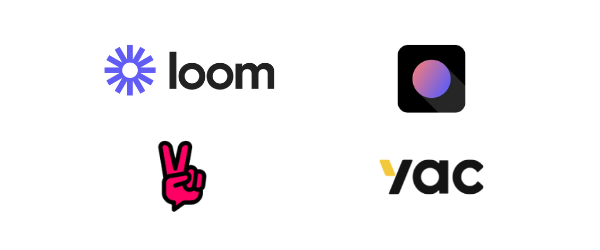Since desk and knowledge workers have embraced remote work—and more recently, hybrid work—they are spending on average 8 hours more working per week.
So that's how remote work, "increases productivity" for employers, right?
Jokes aside, much of this extra effort is driven by meeting overload.
Managers are doing regular check-ins outside of 1:1s. The default way of sharing information for many organizations is dumping it in Slack and Teams channels or a never-ending stream of video calls.
As I recently shared, you can begin to tackle these problems by flipping your communication pyramid with async collaboration. Basically, think first instead of using real-time tools. Prioritize documenting ideas and knowledge before jumping on a call or sending a message.
What is asynchronous collaboration?
It's a calmer way to work where there's no expectation to respond immediately. Knowledge workers get to focus on creating knowledge instead of managing messaging apps and sitting in meetings all day.
Asynchronous collaboration—often referred to as asynchronous communication, async collaboration, async collab, or async work—can dramatically reduce meetings.
In fact, I like to think about a workplace where there are no more meetings.
Examples of asynchronous communication include:
- Writing a document instead of sending a message.
- Leaving a comment on a design instead of doing a "quick" call.
- Recording a video with feedback instead of video conferencing.
- And comparable methods that don't require real-time interaction.
Obviously, "no more meetings" is an extreme but it gets the point across.
You'd rather be closer to no more meetings than meeting overload.
Now think about this math for a moment...
- 2 hours less meetings a week.
- Equates to one day more of work a month.
The compounding effects of significantly less meetings from a pure productivity standpoint are amazing. What I've found for my teams though is the psychological benefit far outweighs just productivity gains.
People stop working 5 - 9 when they aren't in meetings all day. They feel happier when they aren't constantly interrupted or jumping from meeting to meeting. Interruption, constant meetings, and working more lead to burnout. These are major causes for The Great Resignation.
As Oyster highlights in their The Employee Expectations Report 2022, workers value flexibility above many other factors. From work-life balance and flexible working hours to the ability work from anywhere, asynchronous collaboration is very much the engine that can meet these expectations.
Some 47.9% of respondents told Oyster they strongly expect flexible hours from their job, while 80.4% expect this factor on some level.
Get Quick Wins Ahead of No More Meetings
Changing a meeting-driven culture won't happen overnight. It's a process. One place to start is to take a close look at your and your team's calendars.
Google Calendar now provides detailed analytics on meeting times. As an example, if you're spending over 15 hours in meetings, you're allocating more than a third of your week to them.
There are two places to find quicker wins.
Status Meetings
Remove meetings that are status oriented. You should have guidelines for what should be a meeting versus a doc, task, card, comment, etc. Most status-related information can instead be put into those existing places and start saving you significant time.
(Hint: Use meetings for decision making, not status updates.)
Time savings: 1 - 2 hours

Ad-Hoc Meetings
Unless you're losing massive amounts of revenue, a system is down, or the future of the world is at stake, it's unlikely you need to do as many ad-hoc meetings as you are. You can use some of the async tools mentioned below but again, just flip your communication pyramid to drive more deep work and deep collaboration.
Time savings: 30 minutes to 1 hour
Notice I'm not suggesting, for example, you'll do no ad-hoc meetings.
With these two strategies alone, you're already saving at least two hours a week, and moving towards an async collaboration mindset.
Initial Steps Towards No More Meetings
To drive to no more meetings you need to look at how your teams are working today versus how you want to inspire them to work tomorrow. Here are some of the key steps:
Audit Existing Tools
- It is important to understand the tools being used to create some standardization and eliminate redundancy.
- At the same time, remote often requires additional specialized tools (e.g., Maze for remote testing).
- You need to empower team leaders to be able to fund the tools their teams prefer to get their jobs done...without jumping through hoops.
More on enabling new tools in a moment.
Review Analytics
- Just as important on what tools are being used is how they are being used.
- For example, GitLab measures messages sent via DM vs. in public channels as a KPI.
- These kinds of KPIs validate information and knowledge is not trapped between individuals, which generate silos and more meetings.
Employee Surveys
- Don’t base approaches and strategies exclusively on the data coming out of your systems.
- Put surveys out to your team or company to validate what you’re seeing and assumptions you might have.
- Beyond surveys, consider having working groups to go deeper into common pain points surfaced.
Enable New Async-Focused Tools
- Email is the historical digital async tool but there are ample options today focused on the remote and hybrid workplace.
- You can use options like Loom, Yac, Volley, and PingPong either in collaboration with or as alternatives to messaging tools like Slack and Microsoft Teams.
- Each let you provide much more context than just text while also not creating an expectation of immediate response and urgency.

Document How You Work
- Once you’ve gotten a handle on these, you can begin to craft your “How You Work” document.
- This guide identifies how work gets done with what tools and why. It then creates a level playing field across your teams and company.
- I’ve mentioned others in the past but Remote has a great handbook (and it makes sense since their CEO Job van der Voort spent time at GitLab).
No Meeting Days with Async Collaboration
Every company will vary in how many meetings can truly be eliminated.
I've often lead agencies and professional service firms, which require meetings with clients. Still, we often could limit that to just one hour-long meeting a week, moving everything else to async collaboration in tools like Trello, Pivotal Tracker, or comparable.
Increasingly popular in companies embracing async collab are regular no meeting days. Fridays are often identified as the day for no meetings. I also suggest looking at Mondays, so people have a nice ramp coming out of the weekend and don’t have to prepare for conversations on Sunday.
You can also consider doing something like no meetings the first half of Monday and second half of Friday. With this thinking, there’s still effectively an entire day of no meetings without placing it on a single day.
Every Thursday here is considered a “no meeting day.” http://t.co/NNx5fD1U
— Salesforce Careers (@salesforcejobs) March 7, 2012
What are Async Weeks?
Salesforce experimented with an entire week of no meetings and also encourages no meetings on Thursday. They aren’t the first to do that but perhaps are a very early pioneer considering their size. These weeks are often meant to push async to the max and see what's truly possible.
GitLab, again as a leader in remote-first operations also has async weeks as does Almanac, which I previously covered on my podcast. Eventbrite Chief Human Resource Officer David Hanrahan also recently covered their learnings from an async week experiment, including stats like:
- Productivity increases by 13 points and stress levels decreasing by 28 points.
- 79% of those surveyed welcomed more async work.
Concluding Thought
Ten years ago, I was devising many of these principles and strategies to solve my own problems...very few companies or people were talking about them. Now they're becoming mainstream as companies face similar issues in an increasingly remote-first workplace.
With that context, I understand it can be easy to be overwhelmed with the idea of moving more to an async model. This guide gives you some tangible ways to start moving towards a better way of work for you, your teams, and organization.
Also, keep in mind your goal isn’t to just follow a trend.
By embracing async, people can focus more on getting their work done during their actual work day. When joining the company, my team members were always surprised that they weren’t bothered at night, over the weekend, or while on vacation. All while being remote. It’s because we created a more purposeful and thoughtful remote work environment that prioritized asynchronous collaboration.
Basecamp has a great quote that goes something like,
“Asynchronous most of the time, real-time sometimes, context always.”
Don’t prioritize rules and guidelines or a desire to be async to overshadow these considerations.
